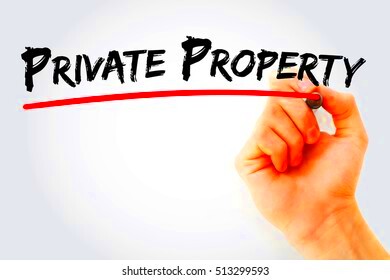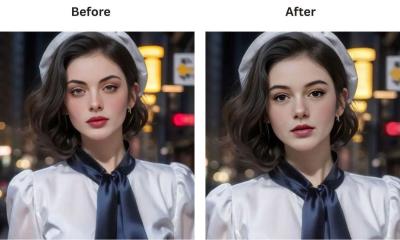Shutterstock offers a wide range of photos, clips and tracks making it a valuable resource for creators across the globe. However delving into its extensive collection comes with a set of licensing guidelines that can be quite challenging to maneuver through. When I began exploring
Shutterstock I found myself confused by the various license types and their implications for my projects. With time I realized that grasping these regulations is essential, to steer clear of legal complications and ensure proper content usage.
Shutterstock provides primarily licenses.
- Standard License: Covers most general uses such as advertising, social media, and presentations. It allows you to use the image in most formats, but it does not cover large-scale merchandising.
- Enhanced License: Provides broader rights, including the ability to use the image for products for resale or distribution in larger quantities. It also covers use in merchandise and larger advertising campaigns.
Different types of licenses have their own rules and restrictions. For example if you want to use an image in a product that you plan to sell you might run into problems if you don't have an Enhanced License. Its crucial to carefully review the license agreement before using any material. Keep in mind that having the appropriate license helps your project go smoothly and steer clear of any potential legal problems.
Types of Content on Shutterstock
Shutterstock is not only a treasure trove of stunning images but also a platform that provides a wide range of content to meet different requirements. Whether you’re creating a blog, launching a marketing initiative or pursuing a project
Shutterstock’s extensive library has options for all. I recall spending hours exploring their website, in awe of the vast variety of offerings they have.
Here’s a quick look at what you can find:
- Images: From high-resolution photos to vector graphics, you’ll find images for every theme and style.
- Videos: Shutterstock offers an extensive library of stock videos, including footage for corporate use, educational content, and creative projects.
- Music: Royalty-free music tracks and sound effects are available for enhancing your videos and presentations.
- Editorial Content: Current events, celebrity images, and other editorial content are available for news and informational use.
Shutterstock offers a range of content types tailored to suit different requirements ensuring you can discover the ideal match for your project. With such a diverse selection at your disposal you wont be confined to a single style or format which makes
Shutterstock a flexible tool for creators across the board.
What Is Private Property?
Private property refers to any asset that is possessed by a person or an organization instead of being owned by the community. This idea becomes significant when it comes to stock photos as it influences the ways and locations where you can utilize specific content. I remember being confused about this concept during a project without fully grasping the significance of knowing what qualifies as private property in relation to stock images.
In the realm of Shutterstock ownership can encompass
- Buildings and Landmarks: Iconic landmarks, private residences, and businesses are often considered private property.
- Brand Logos and Products: Images featuring recognizable brand logos or products often fall under private property.
- People: Individuals in images may also be considered private property, especially if the image is used in a way that implies endorsement or commercial use without proper consent.
Grasping the definition of property is crucial to steer clear of any legal complications and to make sure that your utilization of stock images aligns with the rights of property owners. It’s essential to verify whether an image necessitates permissions or if it’s already authorized for use through a release. By taking this meticulous route you uphold intellectual property rights and engage in content usage.
How Shutterstock Handles Private Property
When I began using Shutterstock I was curious about how they dealt with matters, especially since many of their images include structures, logos and recognizable individuals. However as time went on I learned that Shutterstock has established protocols in place to address these issues safeguarding both users and property owners.
Shutterstock utilizes various strategies to safeguard its assets.
- Property Releases: For images featuring private property or recognizable individuals, Shutterstock often requires a property or model release. This legal document grants permission for the use of that property or person’s likeness.
- Editorial Use Only: Some images are tagged for editorial use only. These images can be used for news and commentary but not for commercial purposes. This distinction helps avoid misuse in advertisements or promotional content.
- Verification Process: Shutterstock has a robust verification process to ensure that any private property depicted in their images is handled correctly. They review releases and permissions to make sure everything is in order.
Shutterstock promotes responsible content usage and respects the rights of property owners through these practices. Its reassuring to know that they have implemented such safeguards making it more convenient for users such as myself to explore their extensive collection with assurance.
Examples of Private Property in Stock Images
Grasping the concept of what counts as private property can be somewhat challenging However witnessing real life instances can help shed light on the matter. I recall feeling puzzled when I came across images depicting property and it was quite enlightening to realize just how nuanced these examples could be.
Here are some common examples:
- Landmarks: Famous landmarks like the Eiffel Tower or private buildings are considered private property. For instance, a photo of a recognizable hotel lobby might require special permissions if used commercially.
- Brand Logos: Images featuring brand logos or products can fall under private property. An image showing a Coca-Cola bottle, for example, might need additional licensing if used for advertising.
- Residential Properties: Private homes and their interiors are also private property. A photo of a distinctive house or interior design might need a property release to use in a commercial context.
These instances underscore the significance of examining the details of every picture. The presence of examples aided my comprehension of the intricacies involved and the necessity of securing appropriate authorizations to use such material in a manner.
Why Private Property Matters for Users
When I began looking into images I initially thought of private property as a legal technicality. But the more I explored the topic the more I understood why its important for users to adhere to these guidelines. Respecting private property is essential for reasons that uphold the ethical and lawful use of content.
Here’s why it’s important:
- Legal Compliance: Using images of private property without proper permissions can lead to legal disputes. By understanding and adhering to these rules, users avoid potential lawsuits and fines.
- Respect for Rights: Respecting the rights of property owners and individuals is both a legal requirement and an ethical consideration. It’s about acknowledging and honoring their ownership and privacy.
- Professional Integrity: Using content ethically enhances your professional reputation. Clients and audiences appreciate transparency and respect for intellectual property, which can positively impact your work’s credibility.
From what I’ve learned dealing with the regulations on property I’ve come to realize the significance of being careful and considerate when using images. It’s not merely about steering clear of issues; it’s also about being a creator. Recognizing and honoring these guidelines preserves the quality of your work and nurtures a more respectful artistic community.
Common Misunderstandings About Private Property
When I started using photos I came across quite a few misunderstandings regarding private property. Its understandable since there is a wealth of information available and not all of it is clear cut. Some prevalent misconceptions can result in problems and I have noticed that clarifying these points can have a significant impact.
Here are some frequent misunderstandings:
- “Editorial Use Means I Can Use Any Image for Commercial Purposes.” Editorial use is strictly for news, blogs, or commentary. Using these images in ads or product designs could get you into trouble. I once used an editorial image for a promotional flyer, and it was a hard lesson in understanding image usage rights.
- “Private Property Only Applies to Buildings and Logos.” It’s not just about buildings and brands. Private property also includes individuals' likenesses and interior designs. Even a simple photo of someone's home might need additional permissions.
- “All Stock Images Have the Same Rights.” Different images come with different rights and restrictions. Some require additional releases or licenses, especially if they feature identifiable people or private property. I learned this the hard way when I used an image for a project without checking the fine print.
Clearing up these misunderstandings has made it easier for me to use stock images. Its wise to review the usage terms for every image and if you're unsure reach out to Shutterstock for clarification or consult a legal professional.
FAQs
Frequently asked questions are a great way to address common concerns and provide clarity. After dealing with Shutterstocks licensing and property matters I understand the importance of finding the answers. Here are some common questions and their responses that I found especially helpful.
“What is a property release and when do I need one?”
- A property release is a document granting permission to use an image featuring private property. You need one when using images of buildings, interiors, or other identifiable property for commercial purposes.
“Can I use images with recognizable brands in my project?”
- It depends on the license. Standard licenses generally don’t cover the use of recognizable brands for promotional purposes. For such cases, an Enhanced License or additional permissions may be required.
“What should I do if I’m unsure about an image’s usage rights?”
- Always check the licensing terms on Shutterstock and, if needed, contact their support team for clarification. It’s better to be safe than sorry when it comes to legalities.
These frequently asked questions serve as a valuable resource to address any worries you may have regarding the use of stock photos. They have assisted me in steering clear of mistakes and making sure that I utilize images appropriately in my work.
Conclusion
Exploring the extensive collection of photos on Shutterstock and grasping the nuances of private property rights can be a daunting task initially. Looking back on my experience I now see that a solid understanding of licensing guidelines, awareness of private property and clarification of prevalent misconceptions has greatly influenced my approach to creative endeavors.
To sum up:
- Always review the licensing terms and ensure you have the correct permissions for your intended use.
- Recognize what constitutes private property and respect those rights to avoid legal issues.
- Clarify any doubts with FAQs or direct support to ensure you're using images properly.
Take these things into consideration to make the most of Shutterstock’s resources in a way that’s both effective and ethical. This way you can elevate your projects while also honoring the rights of content creators and property owners. It’s really about being aware and accountable which makes the creative journey smoother and more enjoyable.

 admin
admin








